Acknowledgments
The excellent thought of many attachment researchers has informed my thinking for a number of years, but none more so than the work of Allan Schore. With the publication of his 1994 book came a base for understanding what a clinical developmental psychologist experiences on a daily basis. It permanently changed my perspective, allowing me to deeply integrate what I see in the developing child into a theory that guides intervention. I could not have written this book without the ongoing exposure to Allan Schores thought and support and the stimulating interactions with my colleagues in the Schore Los Angeles study group. I want to personally thank Allan and Judy Schore for their commitment.
My two-week training with Alan Sroufe, June Sroufe, and Betty Carlson at the Institute of Child Development in Minnesota, where I learned to rate the attachment categories from Strange Situation videos, continues to be a lovely memory to which I return often in my mind. Not only have these researchers greatly contributed to the field of attachment, but their compassion, humor, and humanity is palpable, leaving those of us who were fortunate enough to have been trained by them with a model of a researcher walking hand in hand with life.
Another experience that has greatly affected my thinking was my work with Sonia Gojman de Millan, Nancy Kaplan, Mary Main, and Erik Hesse on the Adult Attachment Interview (AAI). Knowing that a parents state of mind with respect to attachment can predict a childs attachment category has made me more conscious of the language adults use to describe their early experiences. My thanks, in particular, to Mary and Erik, who not only gave an excellent training workshop on the AAI in Los Angeles but did so with grace, humor, and sensitive responsiveness to those of us fortunate to attend.
My thanks to the residents and staff of St. Vincent de Paul Village, who have supported our work with children age birth to five and their families. I want to especially thank my colleagues Bill Matulich, Gil Gentile, and Joanna Hirst for their ongoing support. My deep admiration and appreciation goes to the staff members at SAY San Diegos Extended Day child care program, who have allowed me to serve as their consultant for many years, and particularly to Susan Starshine Sharkey for her ongoing commitment to the Starshine Hour. Thanks also goes to the numerous graduate students, particularly Kelly Baier, Alicia Farrell, and Heather Chamberlain, who have contributed to the ongoing work at St. Vincents. I am especially grateful to my administrative assistant, Connie Mullan, who also serves as the coordinator for the birth-to-five program and keeps us afloat. I also want to thank the adults, children, and families who have shared their lives with me in private practice.
This book would not have been written had it not been for Matt McKay, cofounder of New Harbinger Publications, approaching me after a talk that I gave in the Schore developmental panel at the California Psychological Association convention. Thank you, Matt. My thanks to Tesilya Hanauer, acquisitions manager at New Harbinger, for her ongoing support and quick response throughout the process, and a special thanks to Brady Kahn for her excellent editing, which has greatly improved the book; she is also the first mother of a child under five to have read the book in its entirety.
There are many people in my personal life who have encouraged me to write. A special thanks to my writing group, Maggie Barker, Pat Dean, and Kathleen Durning, who tolerated my absence from meetings so that I could write! Also thanks to Rick Avery, Mallory Landers, Gita Morena, Trish Stanley, and my family, both past and present, for their ongoing support over many years, and especially to Jill Weckerly, who read the first four chapters and gave me much encouragement to continue.
 Ruth P. Newton, Ph.D., is a licensed clinical psychologist specializing in attachment and affect regulation in the developing child. She is also the supervising psychologist for Child and Mental Health Services at St. Vincent de Paul Village, a homeless rehabilitation center in downtown San Diego, and a training supervisor for master and doctoral-level interns. Newton is on the advisory board for the Attachment Institute at the University of California, San Diego, and is a member of the Technical and Professional Advisory Committee for the First 5 Commission of San Diego, an organization that funds programming for children five years of age and younger and their families. She works with children and adults in a private practice in La Jolla, CA, and is a longtime consultant for SAY San Diegos Extended Day Childcare program. She is a contributing author to Readers Guide to Affect Regulation and Neurobiology and Play Therapy for Very Young Children.
Ruth P. Newton, Ph.D., is a licensed clinical psychologist specializing in attachment and affect regulation in the developing child. She is also the supervising psychologist for Child and Mental Health Services at St. Vincent de Paul Village, a homeless rehabilitation center in downtown San Diego, and a training supervisor for master and doctoral-level interns. Newton is on the advisory board for the Attachment Institute at the University of California, San Diego, and is a member of the Technical and Professional Advisory Committee for the First 5 Commission of San Diego, an organization that funds programming for children five years of age and younger and their families. She works with children and adults in a private practice in La Jolla, CA, and is a longtime consultant for SAY San Diegos Extended Day Childcare program. She is a contributing author to Readers Guide to Affect Regulation and Neurobiology and Play Therapy for Very Young Children.
Chapter 1
Attachment Matters
Who would have guessed that within minutes of his birth, I would give my life to protect seven pounds of flesh.
a new father
Raising secure, emotionally competent, cooperative children who have full access to their creativity and expression is desperately needed for the health of the human race and the health of the planet. Raising secure children matters. In fact, this chapter will talk about how it matters for your childs entire life. Becoming more secure yourself also matters, not only for your own happiness but also for the child you are raising. So, no matter what your financial status is, what your culture, your ethnicity, your educational level, no matter if you are two parents, one parent, or a divorced parent, a family-member parent, a stepparent, an adopted parent, a foster parent, or have any other configuration at home, the greatest gift you can give your child is a secure attachment. This book will show you what is known about secure children and the attachment they have with their parents.
Setting the Scene: Reconnecting with the Natural Instinct for Attachment
The North Shore of Kauai is magical. It must certainly be a remnant of Eves garden before chaos moved in. Silence, heavy with night, is only interrupted by breeze. In the morning, free-roaming roosters begin announcing the dawn before it appears. Birds rustle around calling out their locations. The air is balmy, and the temperature often matches the bodys temperature, giving you the feeling of wearing the island. Moody weather rhythmically changes as trade winds bring periodic rain to bright sunny days. Egrets dress fields of tropical vegetation growing down to turquoise water, so dramatic in contrast that your eyes begin to drink in something ancient, something that feels lost but familiar the nonverbal rhythms of our bodies.
Looking out the kitchen window at the early morning Kauai rain, I contemplate who you are as the reader, where you are sitting in your life, and how we can together talk about matters of attachment for you and your child. It is my desire to help you find the world of the body, the world of feeling and instinct that so many of us have lost contact with. I do not consider instinct a fluffy idea to be put aside in favor of more verbal, abstract abilities but, instead, see our instincts as the bearers of feeling communications that are deep within the body. Instincts are ancient, shaped by evolution, and their expression needs to be understood, respected, and integrated into our thinking. You will learn in chapter 2 that the right cerebral hemisphere appears to house much of this nonverbal world of feeling and instinct. Too often, instincts and feelings have been corrupted by difficult or confusing childhoods that have led many of us into dark, lonely alleys as we try to find our way. Recovering the instinctual feeling world not only adds color and rhythm but also restores the fullness of feeling and meaning to our lives. With babies and young children, we must use our feelings and instincts to communicate. Carried by the forces of evolution, babies emerge from this deep biology into the waiting arms of their parents, who have different experiences, values, cultures, languages, and concepts held in their minds.

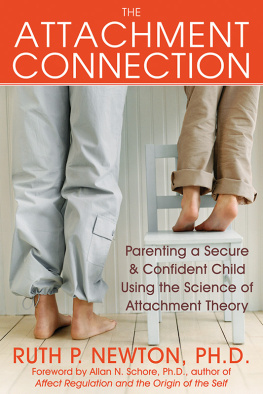

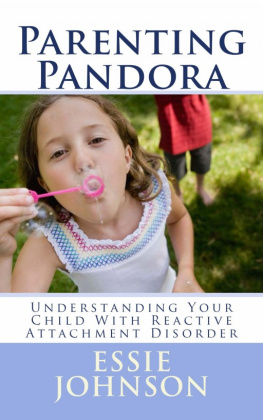
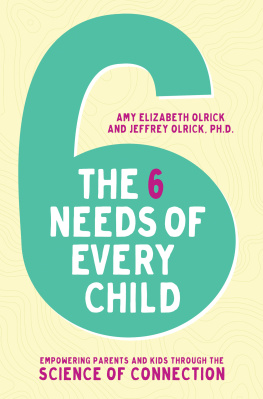
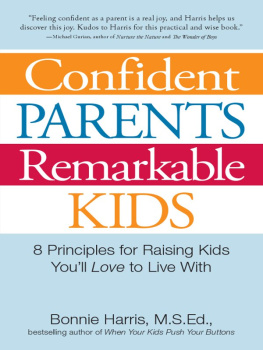
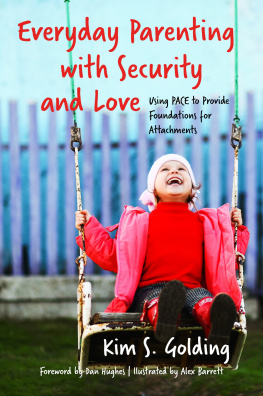
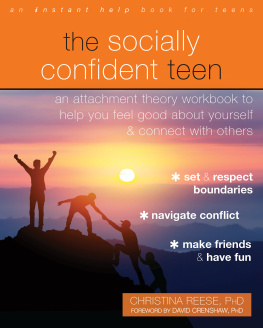


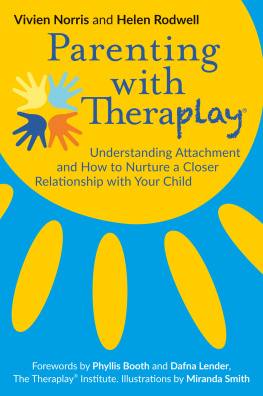
 Ruth P. Newton, Ph.D., is a licensed clinical psychologist specializing in attachment and affect regulation in the developing child. She is also the supervising psychologist for Child and Mental Health Services at St. Vincent de Paul Village, a homeless rehabilitation center in downtown San Diego, and a training supervisor for master and doctoral-level interns. Newton is on the advisory board for the Attachment Institute at the University of California, San Diego, and is a member of the Technical and Professional Advisory Committee for the First 5 Commission of San Diego, an organization that funds programming for children five years of age and younger and their families. She works with children and adults in a private practice in La Jolla, CA, and is a longtime consultant for SAY San Diegos Extended Day Childcare program. She is a contributing author to Readers Guide to Affect Regulation and Neurobiology and Play Therapy for Very Young Children.
Ruth P. Newton, Ph.D., is a licensed clinical psychologist specializing in attachment and affect regulation in the developing child. She is also the supervising psychologist for Child and Mental Health Services at St. Vincent de Paul Village, a homeless rehabilitation center in downtown San Diego, and a training supervisor for master and doctoral-level interns. Newton is on the advisory board for the Attachment Institute at the University of California, San Diego, and is a member of the Technical and Professional Advisory Committee for the First 5 Commission of San Diego, an organization that funds programming for children five years of age and younger and their families. She works with children and adults in a private practice in La Jolla, CA, and is a longtime consultant for SAY San Diegos Extended Day Childcare program. She is a contributing author to Readers Guide to Affect Regulation and Neurobiology and Play Therapy for Very Young Children.